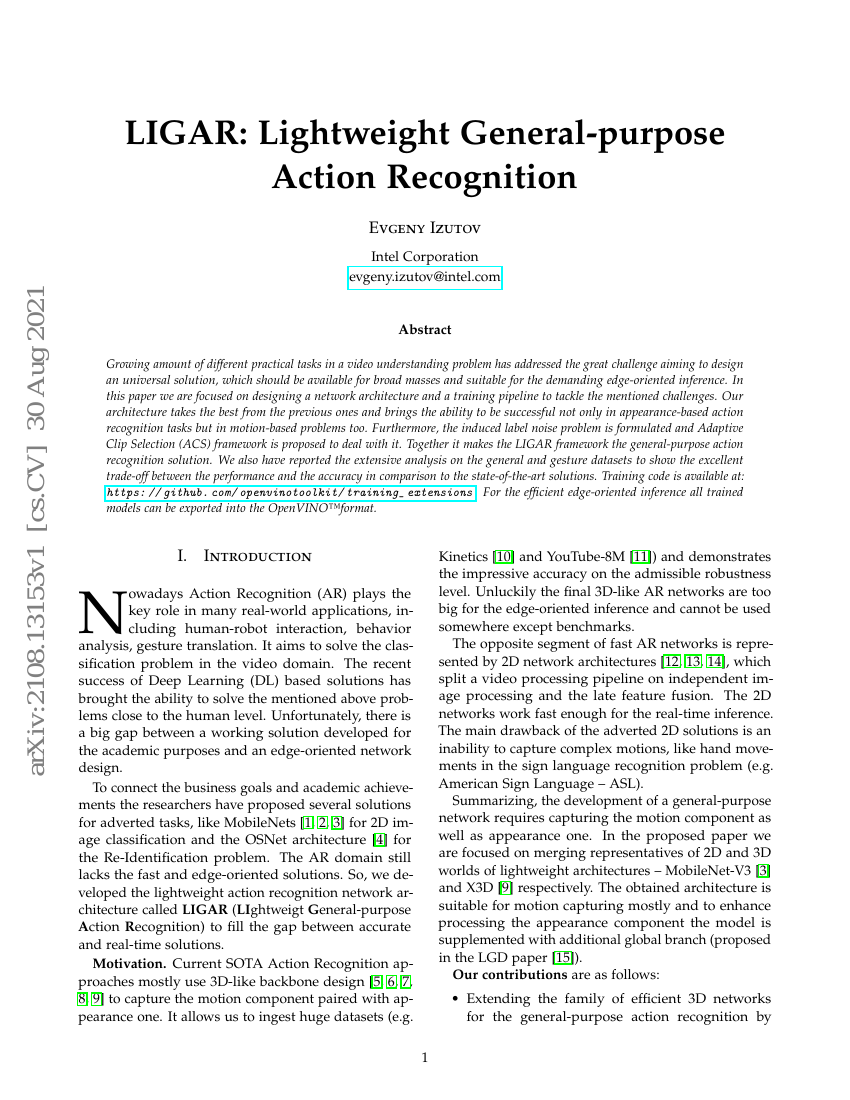Command Palette
Search for a command to run...
Evgeny Izutov

Abstract
Growing amount of different practical tasks in a video understanding problem has addressed the great challenge aiming to design an universal solution, which should be available for broad masses and suitable for the demanding edge-oriented inference. In this paper we are focused on designing a network architecture and a training pipeline to tackle the mentioned challenges. Our architecture takes the best from the previous ones and brings the ability to be successful not only in appearance-based action recognition tasks but in motion-based problems too. Furthermore, the induced label noise problem is formulated and Adaptive Clip Selection (ACS) framework is proposed to deal with it. Together it makes the LIGAR framework the general-purpose action recognition solution. We also have reported the extensive analysis on the general and gesture datasets to show the excellent trade-off between the performance and the accuracy in comparison to the state-of-the-art solutions. Training code is available at: https://github.com/openvinotoolkit/training_extensions. For the efficient edge-oriented inference all trained models can be exported into the OpenVINO format.
Code Repositories
Benchmarks
| Benchmark | Methodology | Metrics |
|---|---|---|
| action-recognition-in-videos-on-ucf101 | X3D MobileNet-V3 LGD-GC | 3-fold Accuracy: 94.85 |
| action-recognition-on-jester-gesture | X3D MobileNet-V3 LGD-GC | Val: 95.56 |
Build AI with AI
From idea to launch — accelerate your AI development with free AI co-coding, out-of-the-box environment and best price of GPUs.